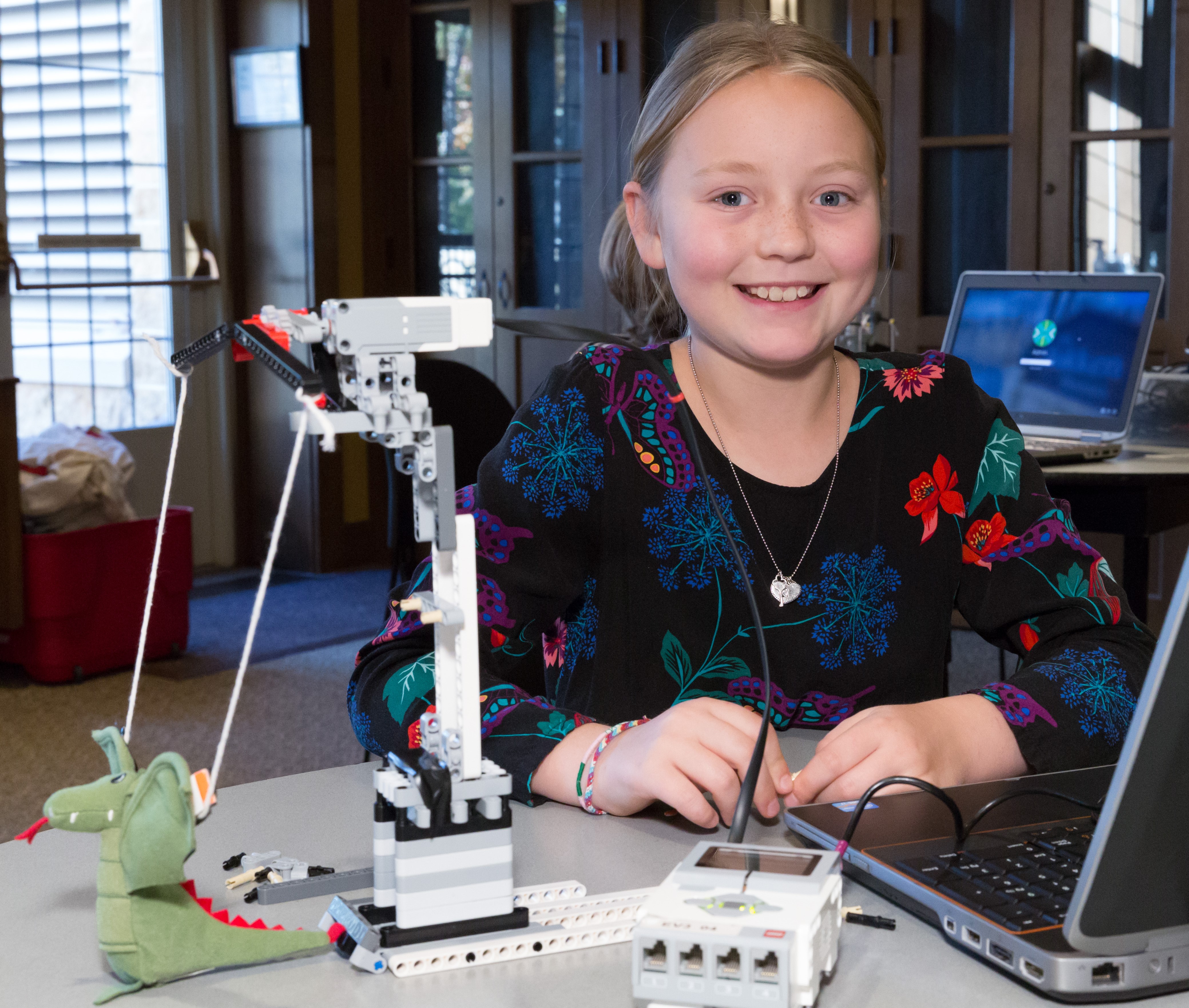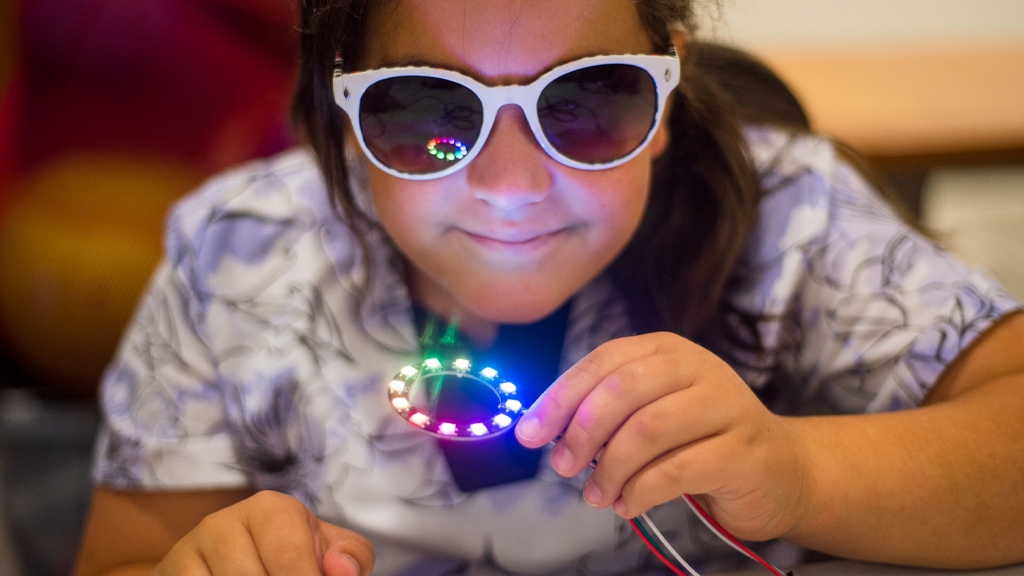BRIEF
A Case for Creative Coding
As the world has become increasingly digital, coding has become an ever-more-essential tool in a STEM toolbelt. Software drives the way we live and interact with the world—especially in the last year! And, momentum is growing for teaching coding in schools. However, coding is often taught in isolation from other subjects, with contrived “problems” to be solved. If students are to become independent and self-reliant (a primary goal of education), they need opportunities to work on creative and open-ended projects.
While prescribed problems to solve with coding may have their place, at The Bakken Museum students are introduced to coding from the beginning in a way that inspires creativity and self-direction. Founded by medical technology pioneer Earl Bakken, The Bakken Museum is a small museum in Minneapolis that celebrates the cycle of innovation and inspiration. Creating opportunities for students to engage with STEM, which has increasingly included coding, in self-directed and supported ways is core to how we help students develop a passion for science. Students at The Bakken Museum are empowered with creative freedom for what they design and how they build their projects. Each learning opportunity—whether a one-day, weeklong, or six-week program—has a theme to explore with guided instruction laying foundation for creative application. Guided instruction provides students with skills like controlling motion, light, or sound that they will soon apply to the open-ended topic at hand (recent examples include robot petting zoos, puppetry, and art machines). Students then spend the bulk of the session designing and building projects of their choosing. Providing opportunities for students to connect their interests to what you want them to learn is a great way to provide inspiration. Our instructors help model this self-directed and creative process by creating their own project examples to share with students; this also helps them anticipate challenges students might encounter and increases buy-in from students.
“It encourages you to take self-responsibility. It is hands on. You are independent (unless you need help).” –7th grader at The Bakken Museum's Summer Camp
The Bakken Museum has developed and refined its student-driven, project-based approach over 20 years and applied it in all of its youth programs. We have seen much success with students from third through ninth grades in developing interest in STEM and STEM careers.
“This camp was super fun and innovative. It really increased my interest in science.” –4th grader at The Bakken Museum's Summer Camp
We believe this approach can work in any environment in or out of school, in formal or informal settings. Coding can be a tool for creative self-expression, and letting kids learn to code by exploring and sharing ideas about things they care about can ignite a spark that can serve them for the rest of their lives. To support students, Bakken instructors take a guide-on-the-side role, modeling authentic problem solving (instructors cannot predict in advance what problems students will encounter!) and offering encouragement. The focus becomes less on the final product and more on the process of making design decisions, solving problems, and persisting through frustration or failures. The ultimate goal is to teach kids to find their own solutions and help them build creative confidence. Coding projects can be a great way for students to develop autonomy. Students stay more engaged when they have ownership of the outcome and design the path to get there. Instructor-built prototypes both help instructors identify the challenges students might encounter and serve as a physical model for students to reference, helping them understand what is possible and spark ideas.
The tinkering and coding found at the intersections of art, technology, and design can be integrated into any subject or content area. Letting personal interests drive projects helps appeal to a broader range of students, and the computational thinking and self-efficacy skills they develop are relevant to the rest of their lives. To succeed in a rapidly changing world, students need to develop autonomy through opportunities to direct and apply their own learning. And creative coding creates opportunities for students to grapple with ambiguity and make decisions, while keeping students excited and engaged.

Some of our favorite sources of inspiration for creative coding projects include the following:
- Daniel Shiffman and the Coding Train community — YouTube tutorials https://thecodingtrain.com/
- Adafruit https://learn.adafruit.com/ and Sparkfun https://learn.sparkfun.com — Amazing collection of electronics parts and learning resources. (a 10% discount to educators is available)
- Make https://makezine.com/ and Micro:bit Magazine https://micromag.cc/
- Invent to Learn http://inventtolearn.com/
- Exploratorium's Tinkering Studio https://www.exploratorium.edu/tinkering/blog
- Wonderful Idea Company https://wonderfulidea.co/blog
- NXT programs — Great build instructions to spark ideas http://www.nxtprograms.com/
- Scratch Labs — Cutting-edge technology made accessible https://medium.com/scratchteam-blog/scratch-lab-extending-creative-possibilities-and-play-5b131cc4d9de
- Coding for Minecraft — we haven’t had a chance to play with this yet, but kids love Minecraft) https://education.minecraft.net/class-resources/coding-with-minecraft
Justin Spencer (spencer@thebakken.org) and Eileen King (king@thebakken.org) are educators at The Bakken Museum in Minneapolis, Minnesota.
citation: Spencer, J., and E. King. 2021. A case for creative coding. Connected Science Learning 3 (2). https://www.nsta.org/connected-science-learning/connected-science-learning-march-april-2021/case-creative-coding
Computer Science Interdisciplinary STEM Teaching Strategies Informal Education


